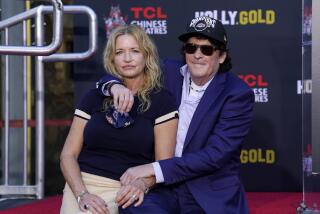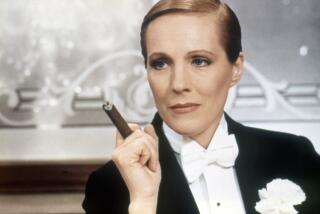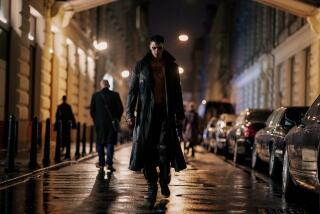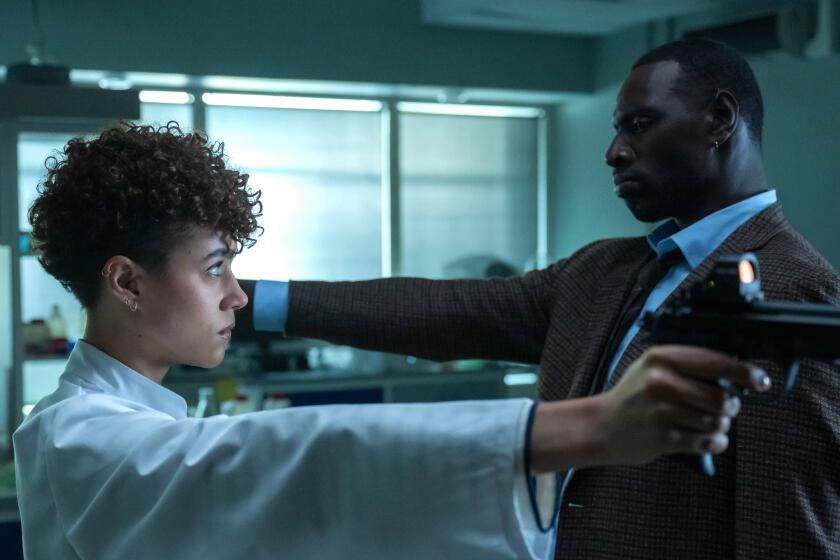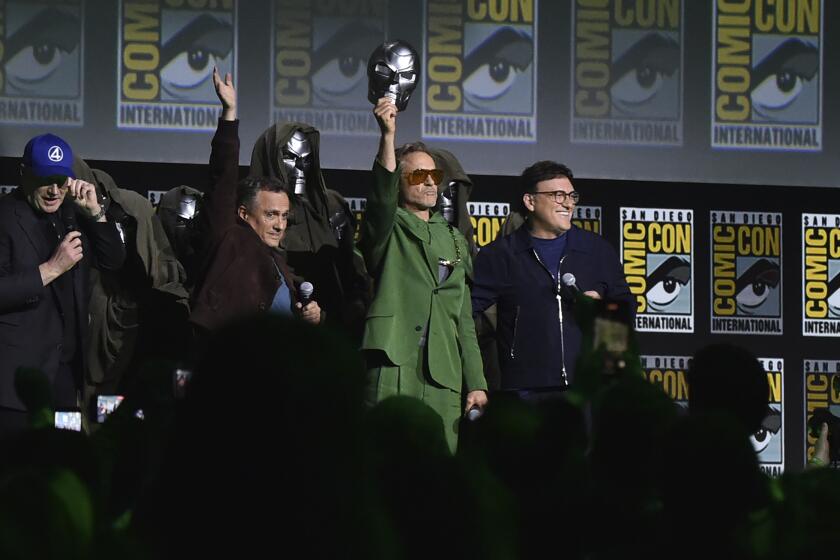Sundance Surprises : Festival: Tom Noonan’s ‘What Happened Was’ is an unexpected winner, taking home two major trophies. ‘Freedom on My Mind’ is another dark-horse victor.
In a competition rife with the natterings of disgruntled 20-year-olds, one of the few films to deal maturely with adult concerns ended up being the Sundance Festival’s surprise big winner.
“What Happened Was,” written and directed by actor Tom Noonan, who also co-starred, won both the Grand Jury Prize for dramatic films and the Waldo Salt screenwriting award at Saturday night’s typically chaotic presentation ceremony. Noonan, appearing in a play in New York, could not attend, though co-producer Robin O’Hara, who hastened to accept, assured everyone that, “Tom’s going to go nuts.”
Developed by the actor as a break from the chilling villains he’s played in “Manhunter” and “Last Action Hero,” “Happened” is a two-character, one-set drama detailing a painfully nervous first date between co-workers (Noonan and Karen Sillas) in a Manhattan law firm. Compellingly written and acted, it paints an achingly realistic picture of people desperately trying to connect.
In even more of an upset, the Grand Jury prize for documentaries went to the powerful “Freedom on My Mind,” a vivid and informative evocation of the Mississippi Voter Registration Project of the early 1960s. Co-directed by Berkeley-based filmmakers Connie Field and Marilyn Mulford, who said they hadn’t expected to win, “Freedom” combines archival footage and contemporary interviews in a way that is both thoughtful and passionate.
Not surprisingly winning the Audience Award for documentary was the nearly three-hour “Hoop Dreams,” nominally a movie about sports but in truth an examination of a complex, multilayered social reality.
The Chicago-based filmmaking team (director and co-producer Steve James and co-producers Fred Marx and Bill Haugse) spent four-and-a-half years shooting 250 hours of film detailing not only the careers but also the private lives of a pair of gifted high school basketball players who fantasize about a career in the NBA as a way out of the poverty of their surroundings. “Hoop Dreams” revitalizes this familiar tale, managing to be surprising and emotionally potent as well as offering a devastating look at the realities of life in the inner city.
The Audience Award for drama went to “Spanking the Monkey,” one of the festival’s many forays into the world of dysfunctional families. “Fun,” a similarly unhappy scenario despite its title, won Special Jury Recognition for its two stars, Alicia Witt and Renee Humphrey, who play a pair of bratty-to-the-max teens who make Leopold and Loeb look well-adjusted.
Also winning Special Recognition for acting was Sean Nelson, the 13-year-old star of “Fresh.” That unlikely combination of social consciousness and crime melodrama also earned a share of the Filmmakers Trophy, voted on by the other competition directors, for writer-director Boaz Yakin.
The other half of the Filmmakers Trophy went to “Clerks,” whose odyssey from its festival-low $27,575 budget to a distribution deal with Miramax is Sundance’s most unlikely success story. The film also provided the evening’s most appropriate acceptance speech, courtesy of writer-actor-director-co-producer Kevin Smith: “This is a really cool piece of glass.”
Smith, a clerk himself, told Filmmaker magazine that he one day realized “there had never been a convenience store movie.” The money for this epic came from “a supply of eight or 10 credit cards with $2,000 limits” plus the tuition he saved from dropping out of film school. Shooting nights, when the store he worked in was closed, Smith usually got no more than one hour of sleep per day, and was finally so deprived he slept through the shooting of the film’s climatic sequence.
*
The Filmmakers Trophy, documentary division, happily went to “Theremin: An Electronic Odyssey,” which seems at first like nothing more than an eccentric footnote to musical history that describes the life of a charismatic Russian genius named Leon Theremin.
The instrument he invented and named after himself marked the beginning of electronic music, and its haunting, unworldly sound can be heard in everything from movies such as “The Day the Earth Stood Still” to the Beach Boys’ “Good Vibrations.” But Theremin’s life suddenly took a turn right out of a John Le Carre novel, and director Steven M. Martin (a former Nuart Theater projectionist) gracefully follows all its fascinating turns with unfailing wit and intelligence and turns “An Electronic Odyssey” into the most delightful of long, strange trips.
“Suture,” a film noir knockoff beautifully shot in wide screen black and white, took the Cinematography award for drama for director of photography Greg Gardiner, while the sepia hues of Morten Sandtroen won on the documentary side for “Colorado Cowboy: The Bruce Ford Story,” which proves once again that very few things are as photogenic as men of the American West. Unfortunately, the clip that was shown when the award was announced was stock rodeo footage, causing Sandtroen to dryly note as he held the trophy, “I should find out who shot that and pass this along.”
Also winning awards were a trio of documentaries. “Coming Out Under Fire,” a look at gay and lesbian veterans of World War II, received a Special Jury Award for Technical Excellence. Both “Heart of the Matter,” an examination of women with AIDS, and “Dialogues With Madwomen,” offering candid tales of terrifying mental breakdowns and how they were treated, shared the Freedom of Expression Award. “Dialogues” director Allie Light made the evening’s most eloquent acceptance, talking of “the nature of hope: The more you put it down, the more it seems to rise like a wild dream.”
Especially on its final weekend, when table-hopping at the Barking Frog and the Riverhorse Cafe reached epidemic proportions, this was the year when the Hollywood presence at Sundance threatened to get out of hand. The crush to get into the world premier of the Coen brothers’ “The Hudsucker Proxy,” complete with roped-off seats and Warner Bros.’ executives on walkie-talkies, was uncomfortably close to an L.A. industry event.
But for every refugee from Morton’s in a parka, there were people like the couple from Juneau, Alaska, who planned their vacation around the festival because they can’t see Sundance-type films at home. And for every studio-released film that premiered with reserved seats with executives names on them, there were movies like “Darkness In Tallinn.”
This Estonian/Finnish co-production not only kept coming up with new wrinkles in its mimeographed posters (“Dare to Cast the First Estone” read one, “Starring Sly Estallone and Sharon Estone” read another), it started its screenings with a live a capella version of what was claimed to be the Estonian national anthem by the film’s director and producer. If Sundance can keep producing moments like that, it won’t have to worry about losing its soul.
More to Read
Only good movies
Get the Indie Focus newsletter, Mark Olsen's weekly guide to the world of cinema.
You may occasionally receive promotional content from the Los Angeles Times.
